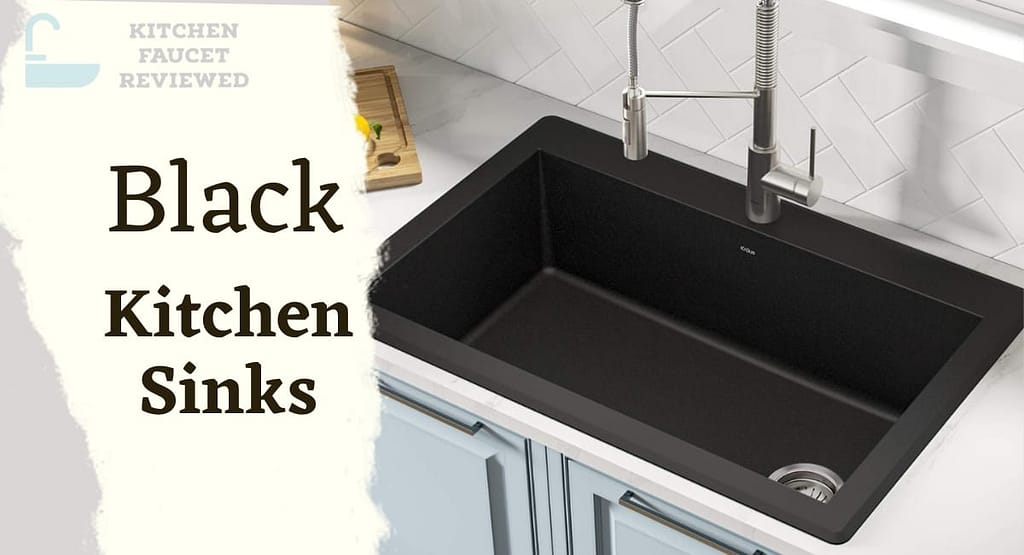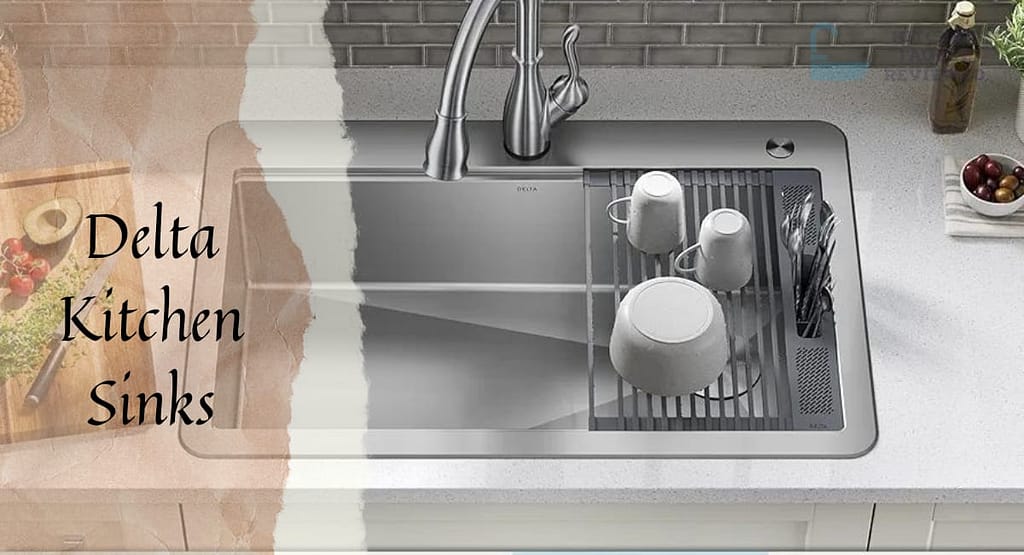The Ultimate Guide to Measuring Your Kitchen Sink
f you’re planning on upgrading your kitchen sink, you’ll need to make sure you know the correct measurements before you start shopping. Measuring your kitchen sink can be a daunting task, but it doesn’t have to be. In this ultimate guide, we’ll walk you through the process step-by-step to ensure you get accurate measurements every time.
The Ultimate Guide to Measuring Your Kitchen Sink
Step 1: Use a tape measure:
When installing a sink, it is important to measure the space where it will be placed to ensure that it fits properly. The following steps can help you accurately measure the space for the sink:
- Gather the necessary tools: You will need a tape measure, a pencil, and a piece of paper to record your measurements.
- Measure the length of the countertop: Use the tape measure to measure the length of the countertop where the sink will be placed. Start at one end of the countertop and measure all the way to the other end. Write this measurement on paper.
- Measure the width of the countertop: Measure the width of the countertop from front to back. This will give you the depth of the sink that will fit in the countertop. Write this on the paper.
- Measure the depth of the cabinet: Measure the depth of the cabinet below the countertop. This will give you the maximum depth of the sink that can be installed. Save the measurement on paper.
- Determine the size of the sink: Based on the measurements you have taken, you can now determine the size of the sink that will fit in the space. For example, if the countertop is 36 inches long and 18 inches wide, and the cabinet is 24 inches deep, a sink that is 33 inches long, 16 inches wide, and 8 inches deep would fit well.
Consider other factors: When choosing a sink, you should also consider the style, material, and features that best meet your needs. You may also need to consider the placement of plumbing and other fixtures in the space
Step 2: Determine the Type of Sink
The first step is to determine the type of sink you have. There are several types of kitchen sinks, including drop-in, undermount, farmhouse, and integrated sinks. Each of these types requires a different measuring method.
Drop-in Sink: A drop-in sink sits on top of the countertop, and the rim sits on the surface of the counter. To measure a drop-in sink, you’ll need to measure the length and width of the sink from the outer edge of the rim.
Undermount Sink: An undermount sink is installed underneath the countertop, and the rim is hidden beneath the counter. To measure an undermount sink, you’ll need to measure the length and width of the opening in the counter.
Farmhouse Sink: A farmhouse sink, also known as an apron sink, has a deep bowl and an exposed front. To measure a farmhouse sink, you’ll need to measure the length, width, and depth of the sink.
Integrated Sink: An integrated sink is a seamless sink that’s molded into the countertop. To measure an integrated sink, you’ll need to measure the length, width, and depth of the sink.
Step3: To Measure the Sink Basin
Measuring the sink basin involves three key measurements: length, width, and depth. Here are the steps to take for each measurement:
- Length: Measure the distance from the left edge of the sink basin to the right edge of the sink basin.
For measuring sink basin’s length, place the tape measure at the left edge of the sink basin and measure to the right edge of the sink basin. Be sure to measure from the inside edges of the sink basin, where the water will flow. If the sink has a curved or irregular shape, take several measurements at different points along the length of the sink and use the average measurement.
- Width: Measure the distance from the front edge of the sink basin to the back edge of the sink basin.
To measure the width of the sink basin, place the tape measure at the front edge of the sink basin and measure to the back edge of the sink basin. Again, do this from the inside edges of the sink basin. If the sink has a curved or irregular shape, take several measurements at different points along the width of the sink and use the average measurement.
- Depth: Measure the distance from the bottom of the sink basin to the top edge of the sink basin.
To measure the depth of the sink basin, place the tape measure at the bottom of the sink basin and measure to the top edge of the sink basin. Be sure to measure the deepest point of the sink. If the sink has a sloping or irregular bottom, take several measurements at different points along the depth of the sink and use the average measurement.
Step 4: Measure the Sink Cutout
When replacing a sink, it is crucial to measure the sink cutout accurately. The sink cutout refers to the hole in the countertop where the sink is placed. This process is essential as it will help you determine the correct size of the sink you need to purchase.
To measure the sink cutout, there are two important measurements that you need to take into account: length and width.
The length measurement requires you to measure the distance from the left edge of the cutout to the right edge of the cutout. To do this, use a measuring tape and place it on the left edge of the cutout. Stretch it across the sink cutout until it reaches the right edge of the cutout. Make sure the tape measure is straight and taut so that you get an accurate measurement.
The width measurement requires you to measure the distance from the front edge of the cutout to the back edge of the cutout. Again, use a measuring tape and place it on the front edge of the cutout. Stretch it across the sink cutout until it reaches the back edge of the cutout. Ensure that the measuring tape is straight and taut so that you get an accurate measurement.
It is essential to measure the sink cutout accurately to ensure that the new sink fits perfectly into the countertop. Failure to do so may result in gaps between the sink and the countertop, which can cause water leakage and damage to the countertop. Therefore, take your time and double-check your measurements before purchasing a new sink.
Step 5: Measure the Faucet Holes
Account for the faucet and other fixtures: When designing a kitchen or bathroom, the placement of the sink and its accompanying fixtures is an important consideration. The faucet and other fixtures can affect the size and placement of the sink, as well as the overall aesthetic of the space. In this answer, we will discuss the importance of considering the placement of the faucet and other fixtures when installing a sink.
Firstly, it is important to understand the various types of faucets available on the market. There are several types of faucets, including single-handle, double-handle, and touchless. The type of faucet you choose can affect the placement of the sink, as well as its size and configuration. For example, a single-handle faucet may require a larger sink than a double-handle faucet, as it needs more space for the handle to turn.
When considering the placement of the faucet, it is important to ensure that it is within easy reach of the sink. This means that the faucet should be positioned at a comfortable height and distance from the sink. It is also important to ensure that the faucet is positioned in such a way that it does not interfere with other fixtures, such as a soap dispenser or sprayer.
The placement of these other fixtures should also be considered when installing a sink. For example, a soap dispenser may be positioned on the countertop next to the sink, or it may be installed directly into the sink itself. If it is installed directly into the sink, it may affect the size and configuration of the sink, as well as its placement.
Similarly, a sprayer may be installed on the sink itself or on the countertop next to the sink. The placement of the sprayer can affect the size and configuration of the sink, as well as its overall aesthetic. It is important to ensure that the sprayer is positioned in such a way that it does not interfere with the faucet or other fixtures.
The Importance of Accurate Kitchen Sink Measurements
Kitchen sinks are a crucial component of any home kitchen. They are used for a variety of purposes, from washing dishes and preparing food to cleaning hands and filling pots with water. However, many homeowners overlook the importance of accurate kitchen sink measurements, which can have significant consequences for both the functionality and appearance of the kitchen. In this post, we will explore the reasons why accurate kitchen sink measurements are essential and provide tips for measuring your sink accurately.
Functionality
One of the most important reasons why accurate kitchen sink measurements are essential is functionality. A sink that is too small or too large for the space can make it difficult to perform daily tasks. If the sink is too small, you may struggle to wash large pots and pans or have to clean up spills and splatters around the sink. On the other hand, if the sink is too large, you may find it challenging to reach across the sink to wash dishes or fill pots with water.
Additionally, an incorrectly sized sink can lead to issues with the plumbing and drainage systems. If the sink is too small, it may not be able to handle the volume of water required for daily use, leading to clogs and backups. If the sink is too large, it may require more water to fill, which can increase your water bill.
Appearance
Another important reason why accurate kitchen sink measurements are essential is appearance. A sink that is too small or too large for the space can look awkward and out of place. A sink that is too small may make the countertop appear cluttered and disproportionate, while a sink that is too large may overpower the space and make it look cramped.
Furthermore, an incorrectly sized sink can affect the overall style and design of the kitchen. If the sink does not match the existing fixtures and finishes, it can clash with the overall aesthetic and detract from the overall look and feel of the kitchen.
Conclusion
Measuring your kitchen sink may seem like a daunting task, but it’s actually quite simple if you follow the steps outlined in this guide. By taking accurate measurements, you can ensure that your new sink will fit perfectly in your kitchen and that your faucet will be installed correctly. Don’t forget to double-check your measurements before making any purchases, and if you’re not confident in your measuring skills, consider hiring a professional to do it for you. With the right measurements, you’ll be on your way to a beautiful new kitchen sink in no time.





